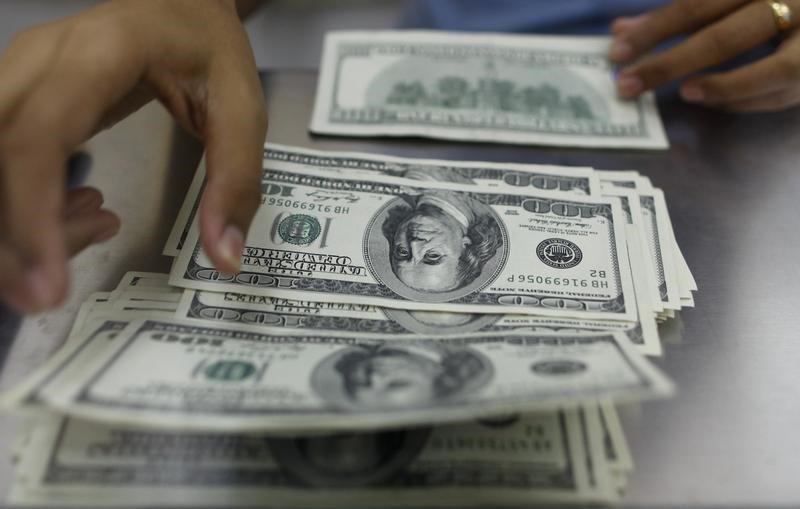At 21:30 Beijing time on Thursday (January 26), the United States announced economic data for the fourth quarter, which performed better than expected, but the growth rate has slowed down. At the same time, the core PCE announced in the fourth quarter fell below 4%. Slow down the pace of rate hikes. As of press time, spot gold bottomed out at US$6.6 to US$1931.01 per ounce and then covered all the declines, showing a range-bound trend.
The initial value of the annualized quarterly rate of real GDP in the fourth quarter of the United States recorded 2.90%, a new high since the fourth quarter of 2021, better than the expected 2.60%, but lower than the previous value of 3.20%. However, the initial value of the core PCE price index in the fourth quarter of the United States recorded an annualized quarterly rate of 3.9%, which is a new low since the first quarter of 2021. The expected value and the previous value were 4% and 4.70%, respectively.
In other data, the monthly rate of durable goods orders in the United States recorded 5.6% in December, the largest increase since July 2020, much better than the expected 2.50%, reversing the previous contraction. The number of people applying for unemployment benefits in the United States recorded 186,000 in the week ended January 21, a new low since the week of April 23, 2022. The expected value and the previous value were 205,000 and 190,000, respectively.
Economic growth has slowed significantly
Momentum in the U.S. economy appears to have slowed markedly as rising interest rates erode demand. Most economists expect the U.S. economy to enter a recession in the second half of 2023, although it will appear mild compared with previous downturns.
“If we get into a recession, it’s going to be a milder recession than what people have seen in the past,” said Jim Caron, head of global fixed-income macro strategy at Morgan Stanley Investment Management.
Retail sales have fallen sharply over the past two months, and manufacturing appears to be joining the housing market in the recession. While the labor market remains strong, business confidence continues to deteriorate, which could ultimately affect hiring.
“Markets and most people will scrutinize this number,” said Sam Bullard, senior economist at Wells Fargo Securities. “Recently released (other) data suggest that economic momentum is continuing to slow.”
NatWest chief U.S. economist Kevin Cummins expects GDP to fall 1% in the first quarter of this year. He said that the impact of the Fed’s interest rate hike on the economy is lagging, and it seems that a big hole will be dug after the end of the fourth quarter, so the first quarter will start very weakly.
Companies outside the technology sector and rate-sensitive sectors such as housing and finance are hoarding workers after struggling to find labor during the pandemic. Labor market resilience and excess savings accumulated during the pandemic underpinned spending. Still, the deteriorating business environment will force companies to slow down hiring and lay off workers.
Demand for durable manufactured goods, bought mostly on credit, has weakened, and some households, especially low-income ones, have depleted their savings. Growth was likely boosted by business spending on equipment, intellectual property and nonresidential structures, but business spending lost some of its luster as demand for goods slipped.
rolling recession
Despite clear signs that the economy looks weaker heading into 2023, as demand slows, companies are likely to focus on drawing down inventories in warehouses rather than placing new orders, weakening growth in coming quarters.
But some economists are cautiously optimistic that the economy will avoid an outright recession and instead experience a rolling downturn, in which sectors decline sequentially rather than all at once. They believe that due to technological advances and a highly transparent Federal Reserve, the lag time from the announcement of monetary policy to the final manifestation of its effects is shorter than before, which will lead to financial markets and the real economy operating under stronger policy expectations.
“Industries are falling in turn, not all at once,” said Sung Won Sohn, a professor of finance and economics at Loyola Marymount University in Los Angeles. “The rolling recession started with real estate, and now we’re seeing the next phase related to consumption. .”
Michael Gapen, chief U.S. economist at Bank of America, said he has pushed back the start of the recession until the second quarter. “The signal should be subdued consumption. The open question is how much personal spending has fallen. We’ve been saying in recent months that the slowdown should spread beyond housing and into manufacturing. … that The signal is clear and it makes sense to me. But the signal around consumption is still very good and you don’t see a recession until consumption shrinks.”
Stephen Stanley, chief economist at Amherst Pierpont, said: “I know the consensus is that a recession is imminent, but I’m skeptical. I think the economy is more resilient in the short term and we’ll stumble through 2023.” A recession, which he sees as more likely in 2024.
In fact, factory production has fallen sharply for two straight months as demand for goods has fallen. Layoffs in the tech sector are also seen as a signal of cuts in corporate capital spending. While residential investment is likely to decline for a seventh straight quarter, which would be the longest stretch since the bursting of the housing bubble triggered the Great Recession, there are signs the housing market may be stabilizing. Mortgage rates have been trending lower as the Federal Reserve has slowed its pace of rate hikes.
